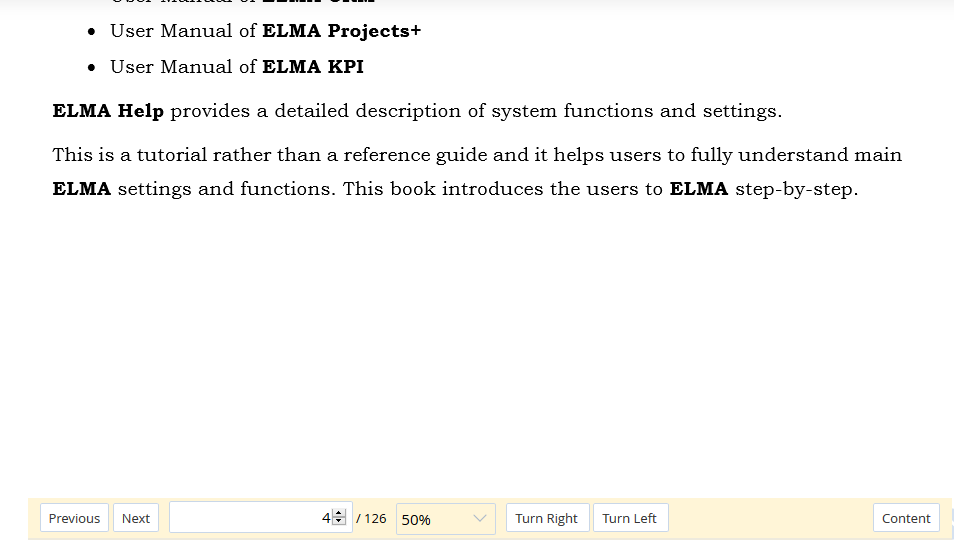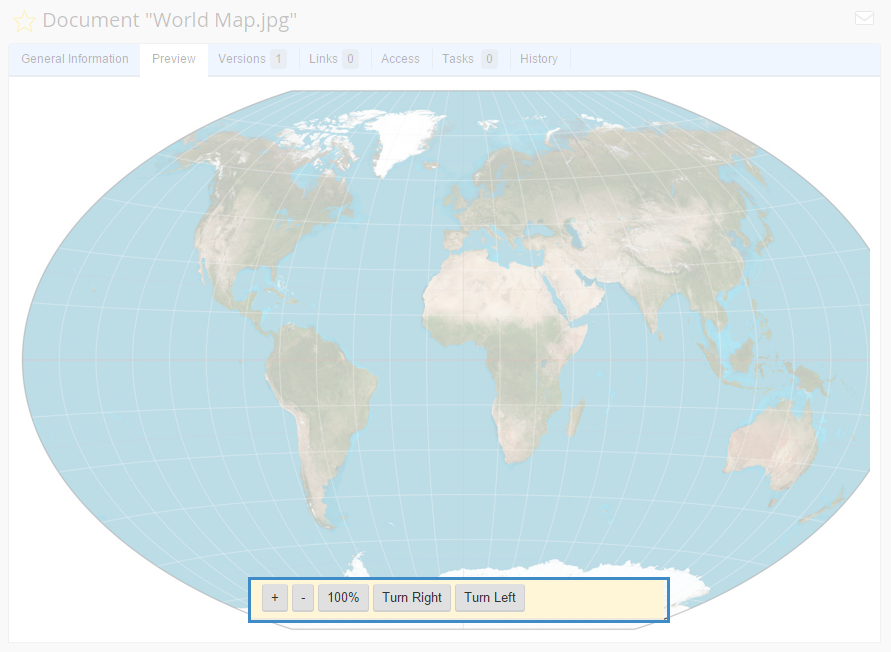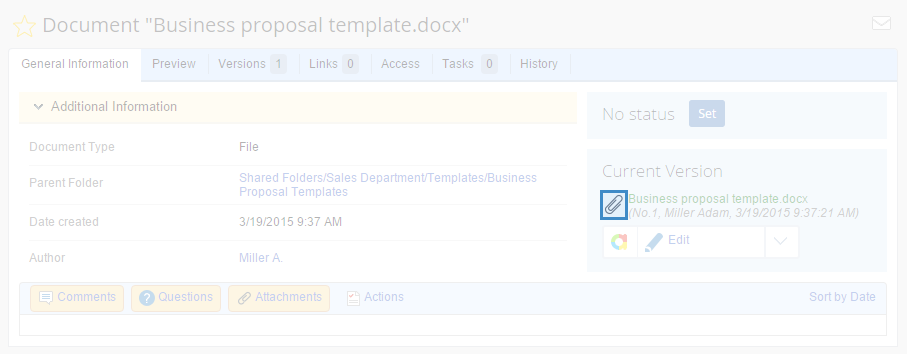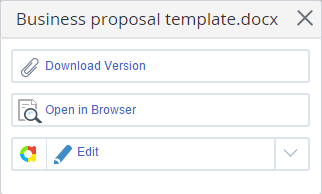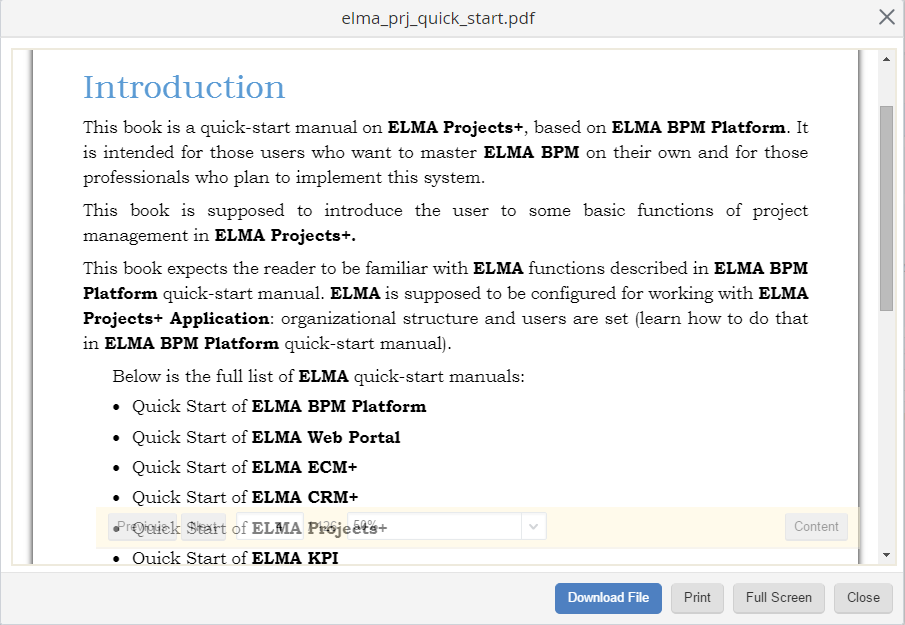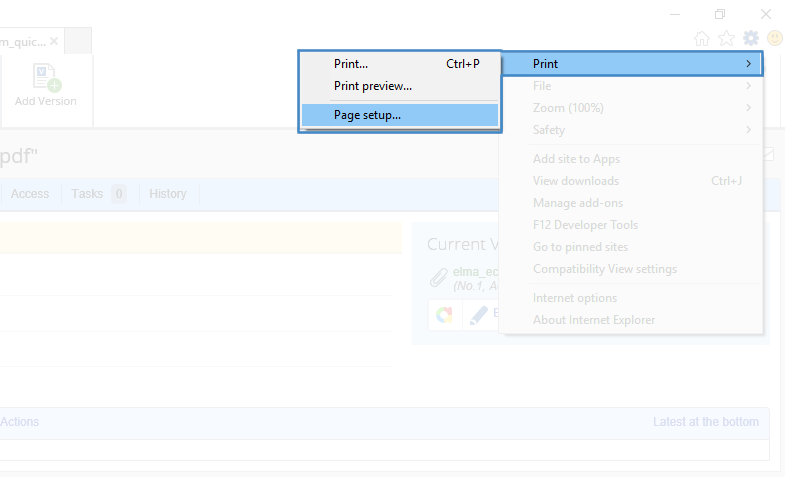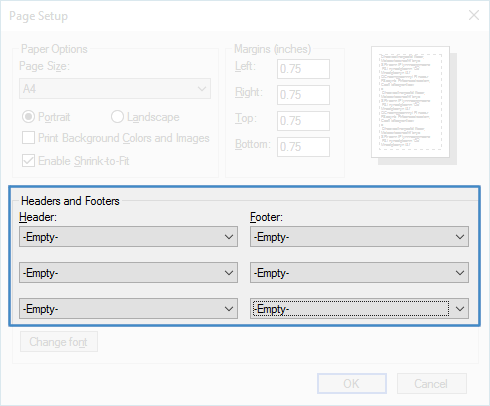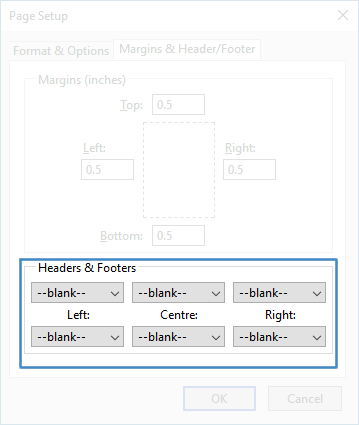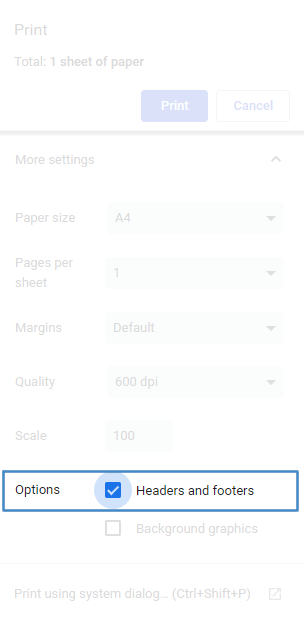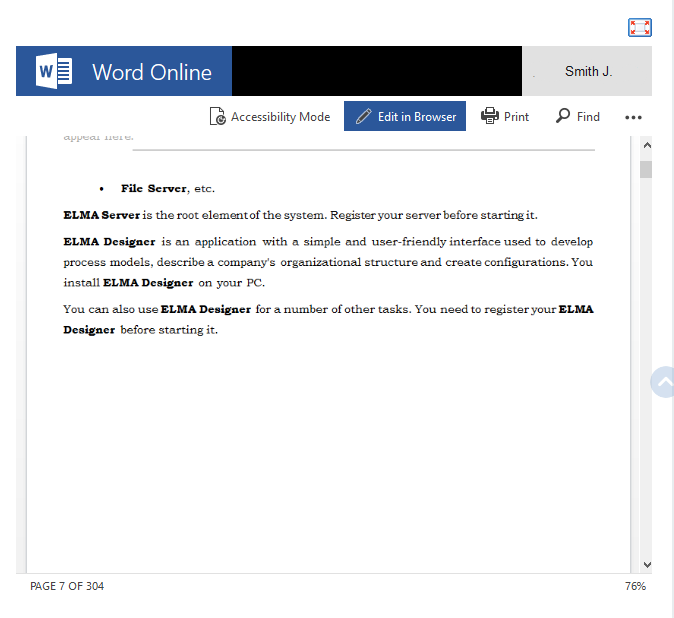This tab allows previewing the content of the document version in Web Application. The content, displayed on the Preview tab (fig. 1) depends on the file type.
|
|
|
Fig. 1. Document page. "Preview" tab. A .docx file
|
Note, that if you try to preview a document version of an unsupported type, the Preview tab will display a notification (fig. 2) that preview is impossible.
|
|
|
Fig. 2. Document page. "Preview" tab. The notification
|
File Extensions
Below is the list of file extensions, supported by the Preview tab:
-
Microsoft Word documents (.doc, .docx, .rtf);
-
Microsoft Visio files (.vsd, .vsdx, .vss, .vst, .vsx, .vtx, .vdw, .vdx);
-
TIFF files (.tiff, .tif);
-
-
open format text files (.ods, .ooxml, .odt, .xps);
-
Microsoft Project files (.mpp, .mpt);
-
Microsoft PowerPoint files (.ppt, .pptx, .potx, .pot, .pps, .ppsx, .odt);
-
-
-
Microsoft Excel tables (.xls, .xlsx, .ods);
-
-
audio (.mp3, .aac, .ogg, .wav). Note, that the .ogg and .wav files are not supported by Internet Explorer
-
video (.mp4, .webm). Note, that the .webm format is not supported by Internet Explorer
Examples of a graphic file and a .pdf file preview are below.
PDF files preview
When you preview .pdf files, the bottom of the page displays a toolbar (fig. 3), which allows you to:
-
-
-
enter the number of the page to open;
-
rotate a document 90 degrees left/right;
-
-
|
|
|
Fig. 3. "Preview" tab. PDF file preview toolbar
|
Click Content to open the panel with document page thumbnails. When you click a thumbnail its page opens. Click Content again to hide the panel.
The hyper-links in the document are functional. When you click one, the page it leads to will open on the Preview tab.
Graphic Files Preview
When you preview graphic files, the bottom of the page displays the toolbar (fig. 4), which allows you to:
|
|
|
Fig. 4. "Preview" tab. Graphic file toolbar
|
If the image does not fit the window, you can drag it.
Document version preview is also available in a browser tab. Click  , to the left of the document name in the table (fig. 5) or on the document page, General Information tab, Current version unit (fig. 6).
, to the left of the document name in the table (fig. 5) or on the document page, General Information tab, Current version unit (fig. 6).
|
|
|
Fig. 6. Document page. "General Information" tab. "Current Version" unit
|
A window for selecting further action will open (fig. 7); click Open in browser in this window.
|
|
|
Fig. 7. Select action window
|
The document version will open in a new window of the web browser (fig. 8).
|
|
|
Fig. 8. Preview document version window
|
Print – print the document version. The getting ready to print window will open. This window appearance depends on the web browser. By default, the document will be printed with headers and footers. You can remove the headers and footers in your browser's print settings.
Full Screen – show the preview window in the full screen mode.
Close – close the preview window.
Setting the print area
In order to remove headers and footers from the print area, you must perform a series of actions. These actions depend on the browser you use.
Internet Explorer
Click on the browser settings button and choose Print – Page setup… (fig. 9).
|
|
|
Fig. 9. Internet Explorer. Tools. Print - Page setup.
|
In the opened window (fig. 10) you will see the Headers and Footers section where in all the fields you need to choose the -Empty- value from the drop-down list.
|
|
|
Fig. 10. Page Setup window. Headers and Footers.
|
Mozilla Firefox
Click on the browser settings button and choose Print (fig. 11).
|
|
|
Fig. 11. Mozilla Firefox. Menu. Print.
|
Click Page Setup… in the opened top toolbar (fig. 12).
|
|
|
Fig. 12. Mozilla Firefox top toolbar. Page Setup button.
|
In the opened window (fig. 13), go to the Margins & Header/Footer tab and choose the --blank-- value in all of the fields from the drop-down list. in the Headers & Footers section.
|
|
|
Fig. 13. Page Setup window. Headers and Footers section
|
Google Chrome
When you click Print on the preview page, you will see Printing Settings window. In this window you need to uncheck the Headers and footers box (fig. 14).
|
|
|
Fig. 14. Google Chrome. Printing Settings window
|
Preview with the Office Web Apps Integrations module
If the Office Web Apps Integration module (from ELMA Store) is installed in the system, Microsoft Office documents (Word, Excel, PowerPoint) will be displayed in the following way (Fig. 15).
|
|
|
Fig. 15. Preview of a document with the Office Web Apps Integration module installed
|
Moreover, when this module is installed, you can edit documents in you browser window. To learn more about working with Microsoft Office documents with the Office Web Apps Integration module, see the description of this module.
Copyright © 2006–2019 ELMA


